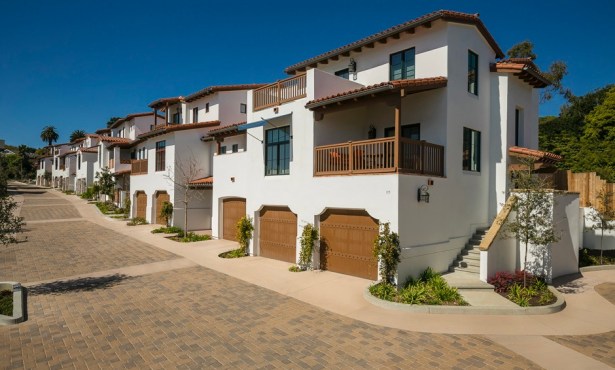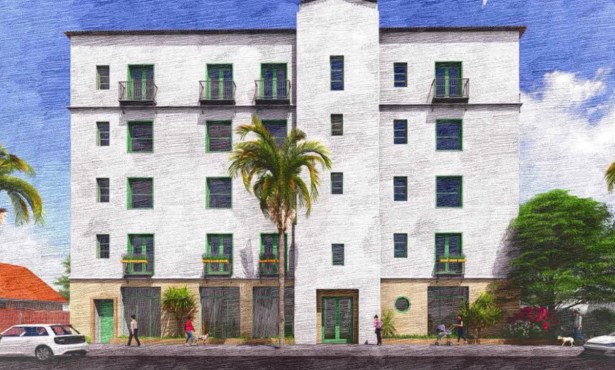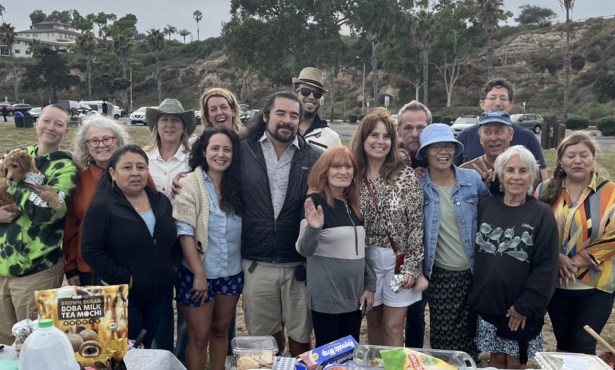Eviction Moratorium Ends as More Tenants Get Walking Papers
United Way Taking Applications for New Rental Support Program

Small signals indicate California’s pandemic emergency is lightening up, perhaps none more consequential for Santa Barbara than the end of the state eviction moratorium on September 30. Millions in federal funds have flowed into Santa Barbara to support rent and utility payments, but evictions appear to be on the increase.
The state’s vaccination rate three months ago — 54.3 percent of residents fully vaccinated — prompted Governor Gavin Newsom to terminate his stay-at-home order, which had been in effect since March 2020. Tenants who were prevented from working were presumably employed again and able to pay their rent after June 2021. Unemployment as of Labor Day was 7.5 percent in California, better than it’s been all year but still distant from a pre-pandemic level of 4.3 percent in February 2020.
Not everyone was able to return to their same job once the shutdown lifted, Jennifer Smith, the executive director of the Legal Aid Foundation of Santa Barbara County, pointed out. Most affected by the pandemic were workers in Santa Barbara’s tourism industry, whether hotels, restaurants, or other visitor-serving enterprises. Some had patched together part-time jobs or are still unemployed. Some with children at home attending school remotely felt a need to stay home with their kids or had to navigate caretaking issues, said Smith, whose nonprofit offers its free services to low-income persons and families.
“We’ve seen a steady increase in evictions since last September, when the first state eviction moratorium ended,” Smith said. Not all evictions are carried out legally, she noted, which by law require first a notice of unlawful detainer to a tenant and later a court order of eviction. “Landlords cannot take action into their own hands,” she warned, such as changing the locks on an apartment door.
The Santa Barbara Tenants Union has heard its share of “soft eviction” complaints. “Landlords intimidate and pressure; they renovate and make noise and make it look like tenants have voluntarily vacated,” said Max Golding, who helped found the Tenants Union just over a year ago. “We’ve witnessed dozens of these during the pandemic and usually arrive when it’s too late — half the building is empty and the other half is scrambling to figure shit out.”
Not all unlawful detainer notices lead to eviction, but countywide records tabulated by the Superior Court show the moratorium had an effect. In 2019, 857 unlawful detainers were filed; in 2020, there were 306; in the first nine months of 2021, there were 219. But the proportion of actual evictions may be rising. A count by the Sheriff’s Office, whose deputies serve most legal papers, found that 410 eviction notices were served in 2019 and 138 in 2020; however, for 2021, 129 had been served as of September 30, a monthly average increase over the previous year.
Sign up for Indy Today to receive fresh news from Independent.com, in your inbox, every morning.
In Santa Barbara’s rental landscape, a good number of corporate landowners and a large contingent of mom ‘n’ pop landlords are members of the Santa Barbara Rental Property Association. Laura Bode, the association’s executive director, said they’ve been advising their members to file for emergency rental assistance before filing legal actions. “We do not anticipate SBRPA members filing many evictions as during the pandemic,” she said of the termination of the eviction moratorium. “Our members have proactively worked to create payment agreements with their residents and assist them in filing for emergency rental assistance if needed.”
The stark quality of Santa Barbara’s rental crisis is reflected in the new emergency rental assistance from the County of Santa Barbara — and the thousands of families who’ve been helped since similar programs began a year ago. The state, federal, and county rental assistance programs are disbursing more than $29 million to landlords to cover rental costs for out-of-work, low-income tenants in Santa Barbara County — and another $26 million is on tap from the federal Treasury — through the county and the state in four separate programs.
“Both the local county and state ERA [emergency rental assistance] programs provide eligible tenants county-wide with rental arrears — current and up to three months of prospective rent — for a total of up to 15 months,” explained Ted Teyber, a housing specialist with the county. Roughly 1,400 households received assistance in the first county-administered program, most of them at 50 percent of the county’s area median income level, and more than 2,000 applications were being processed in the second program, which is being handled by the state.
The United Way of Santa Barbara County administered the first $13 million in funding, according to the nonprofit’s Rent & Utility Assistance webpage, which lists all the eligibility criteria to receive a grant. A county residence is one; another is up to 80 percent of the area median income, or less than $70,000 for an individual; as well as a measurable effect by COVID-19. The new fund of $14 million is currently keeping United Way’s phones deluged with calls since this week’s announcement was made.
The eviction stakes are high in Santa Barbara, said Smith. The ever-present rental squeeze was tightened by an influx of UC Santa Barbara students, some of whom had to take motel rooms, she noted. Avoiding eviction through emergency rental assistance would apply to both rent and utility payments going back to March 2020, she said, encouraging tenants to apply for assistance.
“We’re calling on everybody — tenants, landlords, housing providers — to work together to avoid the most serious impacts, which would be an increase in homelessness.”
Support the Santa Barbara Independent through a long-term or a single contribution.



